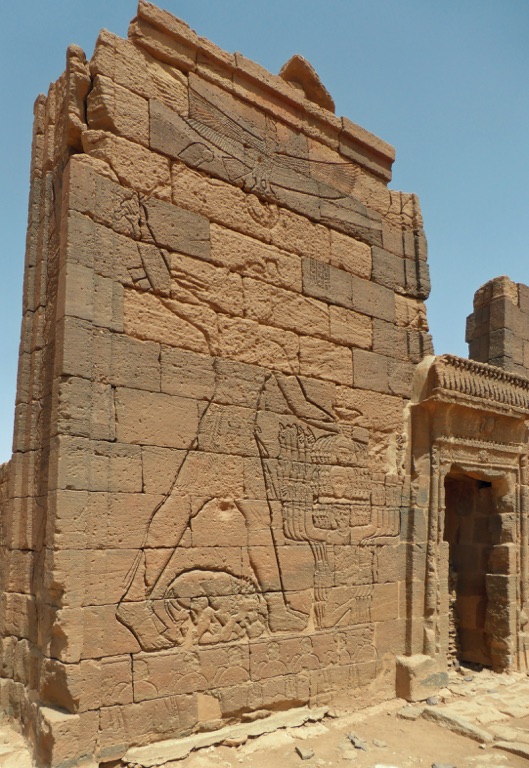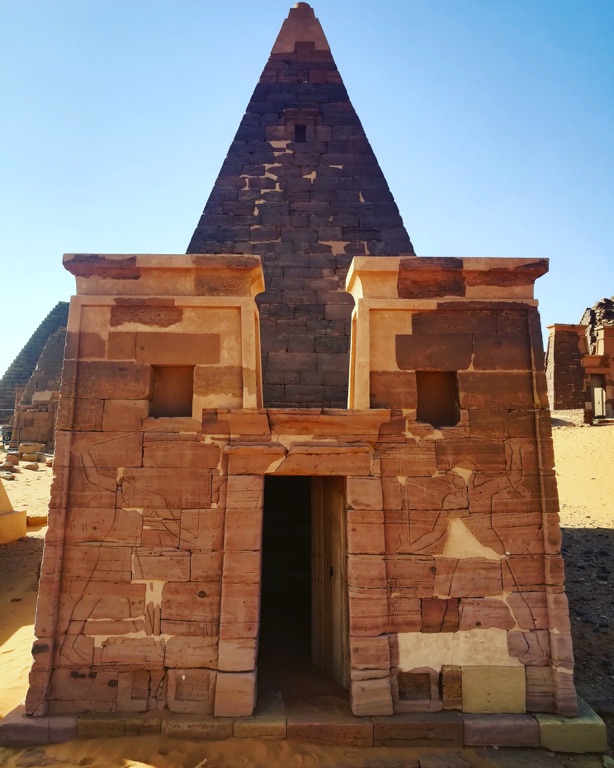The Pyramids of Meroë are a testament to a once-flourishing Nubian civilization in Sudan. Skilled Nubian artisans built these monumental tombs around 2,500 years ago. They mark the resting places of the kings and queens of the Kushite Kingdom. Unlike their Egyptian counterparts, the pyramids at Meroë boast steep slopes and smaller bases. Today, these remarkable structures invite intrigue and admiration. They remind us of a matriarchal society where queens reigned supreme. Nestled between the Nile and Atbara rivers, the site remains an archaeological gem. It captures the imagination of historians and travelers alike.
Kushite Empire
The Kingdom of Kush was a formidable state situated south of Ancient Egypt, in what is today northern Sudan. Flourishing from around 1070 BCE to 350 CE, the Kushites established their own dynasties and even ruled Egypt as Pharaohs during the 25th Dynasty. Their kingdom was famed for its wealth, which was largely attributable to its strategic location along major trade routes and its rich gold mines. The ancient capital of Kush was Napata, followed by Meroë, known for its iron production and manufacturing. The kingdom’s culture was deeply influenced by Egypt, as seen in the Kushites’ art, religion, and use of hieroglyphics, but it also developed its own distinct identity over time.
The kingdoms of Kush were renowned for monumental architecture, including large pyramids they built for the burial of their kings and queens, despite these being smaller in scale compared to Egyptian ones. The ancient kingdom of Kush possessed a sophisticated society with a centralized administration, its own script known as Meroitic, after their capital city Meroë, and a unique pantheon of gods. The decline of the Kushite kingdom began with the rise of the Aksumite Empire and increased desertification of the area. Despite this, the rich legacy of the Kingdom of Kush is critical to understanding the historical development of sub-Saharan Africa and its interactions with the civilizations of the Mediterranean and the Middle East. The ruins of the Kingdom, especially the impressive pyramids and palaces, continue to be a subject of archaeological research and fascination.
The Kingdom of Kush was particularly known for its remarkable achievements in architecture and metallurgy. Historical sites, such as the pyramids at Meroë, stand as testaments to the advanced engineering and construction techniques of the Kushites. These historical places not only highlight the kingdom’s architectural prowess but also its cultural depth, as the pyramids were intricately designed with both Egyptian and indigenous influences. Furthermore, Kush’s strategic control over the Nile facilitated trade, allowing it to become a hub for commerce and interaction between Africa, the Mediterranean, and the Middle East, enriching its culture and economy.
The fall of the Kingdom of Kush can be attributed to several factors, including over-exploitation of resources, military pressure from the Roman Empire and later the Aksumite Empire, and environmental changes that led to increased desertification. These challenges weakened Kush’s economic base and its ability to maintain its political and military power in the region. The rise of the Aksumite Empire, in particular, marked a significant shift in trade routes that bypassed Kush, further diminishing its economic strength and leading to its eventual decline.
Regarding the relationship between Kush and Nubia, it is essential to understand that “Nubia” is a term that has been used to describe the region along the Nile between Aswan in southern Egypt and Khartoum in Sudan. This area encompasses the Kingdom of Kush, making Kush a part of Nubia. Therefore, while all of Kush can be considered Nubia, not all of Nubia was part of the Kushite kingdom. The terms are often used interchangeably, but they refer to different scopes of geography and history.
The Kushites were a Nubian people, and their physical appearance, as depicted in ancient artworks, suggests they were of Sub-Saharan African origin. The race of the Kushites, like many ancient peoples, was diverse, reflecting the various interactions and migrations in the region over centuries. However, it is clear from historical and archaeological evidence that the Kushites identified more closely with Sub-Saharan African cultures and peoples, distinguishing them from their northern neighbors, the Egyptians. This distinction was not just racial but also cultural, as the Kushites developed a unique identity that was both influenced by and distinct from Egyptian civilization.
Explore The Kushite Archaeological Sites and Artifacts from the Kingdom of Kush

The Temples of Apedemak
Hidden within the arid landscapes of Sudan, the Temples of Apedemak hold an aura of ancient mystery and historical importance. These magnificent structures dedicated to Apedemak, a lion-headed warrior god revered in Nubian mythology, provide an invaluable window into the Meroitic period of Nubian history. Built between the 2nd century BCE and the 4th century CE, the temples stand as testaments to the architectural prowess, religious fervor, and sociopolitical dynamics of the Kingdom of Kush. They capture the blend of Egyptian, Hellenistic, and indigenous cultural influences, offering researchers crucial insights into the intricate rituals once performed within their walls. The resilience and restored elegance of these sites mesmerize visitors, serving as a poignant reminder of the rich cultural heritage of Nubia and its once flourishing civilizations.

